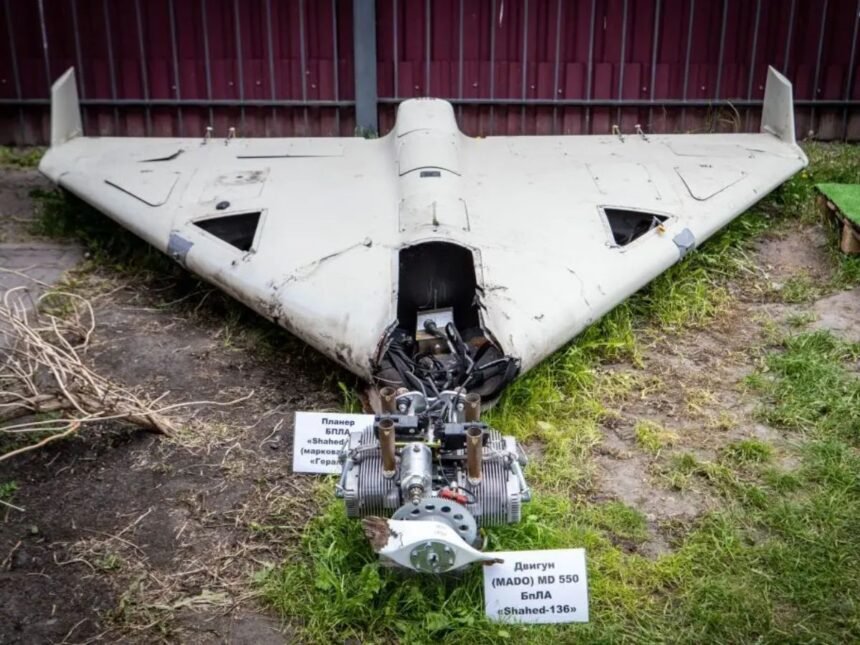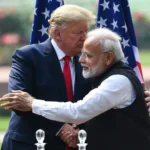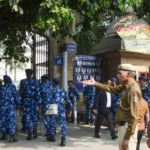Ukraine has formally raised concerns with the Indian government and the European Union (EU) over electronic components manufactured or assembled by Indian firms being found in Iranian-designed drones used by Russian forces, according to people familiar with the matter.
The Ukrainian side raised the issue through formal diplomatic correspondence with the Ministry of External Affairs on at least two occasions after the components were found in Shahed 136 unmanned combat aerial vehicles (UCAVs) since last year, according to the people cited above and documents reviewed.
Ukrainian diplomats also discussed the matter with EU sanctions envoy David O’Sullivan during his visit to New Delhi in mid-July, the people added on condition of anonymity. O’Sullivan had travelled to India to brief Indian officials on the EU’s latest sanctions package, which included an import ban on refined products made from Russian crude and listed the Vadinar refinery, jointly owned by Russian energy giant Rosneft.
According to documents reviewed, an investigation by Ukrainian authorities found that electronic components from Vishay Intertechnology and Aura Semiconductor—either made or assembled in India—were “used by Russia in the production of the Shahed 136” unmanned combat aerial vehicles (UCAVs). The documents include detailed information and images of specific components.
A “bridge rectifier E300359” from Vishay Intertechnology, assembled in India, was used in the Shahed’s voltage regulator unit. Additionally, a PLL-based signal generator AU5426A chip, manufactured by Aura Semiconductor, was found in the drone’s jammer-proof antenna, used for satellite navigation, the documents stated.
Sources said that, from a technical standpoint, the companies have not violated any Indian laws.
In response to a query, External Affairs Ministry spokesperson Randhir Jaiswal said:
“India’s exports of dual-use items are in keeping with its international obligations on non-proliferation, and based on its robust domestic legal and regulatory framework. Due diligence is conducted to ensure that such exports do not violate any of our laws.”
There was no official comment from the Ukrainian embassy in New Delhi. However, Ukraine’s Defence Intelligence Directorate (HUR) has reported the discovery of Indian-origin components in Shahed drones via its official Facebook page and Telegram channel.
Repeated requests for comment from Vishay Intertechnology—a US-based manufacturer of chips, optoelectronics, and sensors—went unanswered. Kishore Ganti, co-founder of Aura Semiconductor Pvt Ltd, a Bengaluru-based subsidiary of Ningbo Aura Semiconductor Co, said the company ensures lawful and ethical use of its products and fully complies with all applicable national and international export control regulations.
“We are deeply disturbed by the possibility that any of our components may have reached defence manufacturers through unauthorised third-party channels, in violation of our stated compliance framework and distribution agreements. We strongly oppose such activity and are committed to taking action wherever compliance gaps are identified,” Aura Semiconductor said in a statement.
Ganti added that, upon learning of the use of an “Aura buffer product” in the Russia-Ukraine conflict, the company conducted a limited audit to determine the item’s end use. “However, the findings of the audit were inconclusive with respect to supply chain or end-user visibility of the Aura buffer product,” he said.
The component in question is a “plug-and-play” type and can be used independently without requiring any support from Aura, making it difficult to trace the end user in this case, Ganti added.
Sources also noted that there have been instances where components made in India were legally exported to destinations in West Asia, only to be later diverted to Russia or Iran. Following Ukraine’s concerns, Indian security agencies visited electronics and chip manufacturers in Delhi, Bengaluru, and Mumbai to sensitise them about international restrictions related to dual-use items.
The Shahed drone—relatively inexpensive—has been used extensively by Russia to strike targets in Ukraine since late 2022. According to Ukraine’s Security Service (SBU), Iran initially supplied 2,000 fully assembled drones to Russia. Russia later began assembling its own drones using ready-made Iranian components. Data from Ukraine’s Air Force showed that Russia launched 6,129 Shahed-type drones in July alone.
Ukraine’s Defence Intelligence Directorate has also reported the presence of electronic components from US and Chinese firms in Russian drones and other weapons systems.
Ajay Srivastava, founder of the Global Trade Research Initiative (GTRI), said such components may have been diverted to Iran through third countries by foreign buyers.
“India strictly prohibits the export of dual-use items to sanctioned destinations. However, once such goods are exported to legitimate third countries, tracing their end use becomes nearly impossible—a challenge every open economy faces,” he said. (Agencies)








